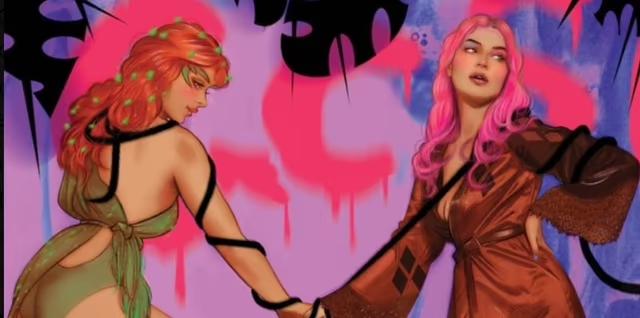If you click on a link and make a purchase we may receive a small commission. Read our editorial policy.
How the late Kevin O'Neill changed comics for the better
Yes, he was a comic artist unlike any other, but Kevin O'Neill did more for comics than many know

In the wake of his untimely death, it’s worth considering that it’s almost impossible to overstate the impact that Kevin O’Neill had on the comics industry, and in ways that go far beyond his inimitable artwork, as impressive and low-key terrifying as it could be. (Jon Morris wrote on Twitter this morning that his older work “looks like a lo-fi rendering of hell,” which feels impressively accurate.)
Fittingly for a career that lasted half a century — beginning with self-published fanzines created as he worked in the offices of British publishing giant IPC, assisting in the background of a number of children’s humor titles, and ending with critically acclaimed work with Alan Moore across a number of projects, alongside a return to 2000 AD — fans have a number of different favorite projects, and even different eras, from O’Neill’s catalog. Whether it’s the proto-punk of his early Nemesis the Warlock collaborations with Pat Mills, the 1980s DC work that made him the only artist whose work was considered entirely too grotesque and outrageous for the Comics Code Authority, his beautifully colored, cartoonishly violent Marshal Law, or his extended partnership with Moore on The League of Extraordinary Gentlemen and related projects, O’Neill was someone whose art was instantly recognizable, and constantly filled with a vibrancy and urgency that few other artists — inside comics or elsewhere — could compare to.
Personally, I’m pretty sure that the first O’Neill work I was exposed to (a term that feels entirely appropriate when it comes to discovering O’Neill as a kid) was his Nemesis, or perhaps some of the Green Lantern Corps shorts he was working on at DC around the early-mid 1980s, and I was immediately fascinated by his detailed it was, how filled with information on seemingly every single level. It felt like the work of an obsessive mind, which meant it was ideal for the obsessive fan I was at the time — and I doubt that I was alone. I was a fan straight away; it was inevitable.
Such attention to detail — and, in particular, background detail — was a constant in O’Neill’s artwork, making every project he worked on a treat to revisit and explore on multiple occasions. Marshal Law, his hyper-violent anti-superhero vigilante satire created with Pat Mills from the late 1980s and early 1990s, benefited greatly from the amount of in-jokes and Easter eggs he filled every page with; the same is true of League of Extraordinary Gentlemen, with O’Neill’s joyous overkill acting as both counterpoint to, and fulfillment of, Moore’s metatextual parodies. As an artist, O’Neill never brought less than 100% to the page. Being a fan of his work, I feel as if he could be relied upon to make it feel as if he brought somewhere in the region of 150% at the very least. (Look at the gallery below for evidence of this theory.)
 1 of 10
1 of 10Attribution
Rebellion










Attribution
Rebellion
All of this would be enough to land him in the upper echelons of the medium’s greats alone, but there’s more to Kevin O’Neill than his comic book art career. I mentioned above that he worked in the editorial offices of IPC at the start of his time in comics, and it was there that he made what might have been quietly one of the more important moves in not just his career, but countless careers throughout comics. As part of the editorial team behind launching 2000 AD, O’Neill managed to sneak creator credits into each of the stories — a first for British comics, which had previously kept the identity of its writers and artists as secret as possible, to the point of painting out signatures on pages if they were caught before the pages went to press.
O’Neill’s move, reportedly inspired by his own fandom for U.S. comics — which credited creators openly — meant that fans would finally know who was responsible for their favorite characters and stories, allowing creators to build their own audiences and fanbases, and re-distributing power inside the U.K. comics industry: now, editors would be less able to get away with replacing talent on a series without anyone noticing and creators would have more opportunity to leverage their success both inside the UK industry and beyond… leading to things like the British Invasion of the 1980s, which brought creators like Alan Moore, Grant Morrison, and Brian Bolland to America.
The passing of O’Neill was first reported publicly by Gosh Comics; his last announced project was a revival of an early 2000 AD creation of his, Bonjo from Beyond the Stars, scheduled for the December 14 issue of the weekly 2000 AD series.
Read more about the upcoming revival of Bonjo, written by one Mr. Garth Ennis, Esq.
Follow Popverse for upcoming event coverage and news
Find out how we conduct our review by reading our review policy
Let Popverse be your tour guide through the wilderness of pop culture
Sign in and let us help you find your new favorite thing.
















Comments
Want to join the discussion? Please activate your account first.
Visit Reedpop ID if you need to resend the confirmation email.